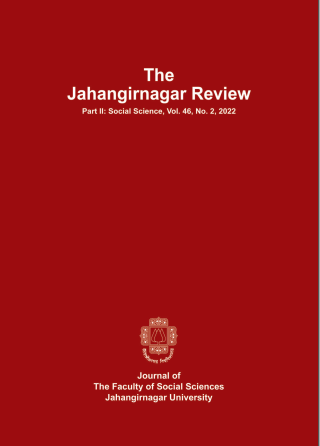Modeling the Potential and Challenges of Solar Energy Use in Rural Bangladesh A Scenario Analysis
Main Article Content
Abstract
The main objective of this study is to know the current status of solar energy use in rural areas and how we can create an empirical model for the rural people of Bangladesh to use the potential of solar energy. A mixed methods approach such as a semi open-ended questionnaire survey and environmental systems analysis tools (e.g. scenario analysis, DPSIR Frame work) have been applied in this current study. In this study, a Community Response to Solar Energy Approach (CReSEA) model has been developed with the views of a total of 450 households on the challenges of using solar energy in remote rural areas of Bangladesh. From the data analysis, it is realised that the solar home system is widely used in Gabura Union, Shyamnagar Upazila of Satkhira, but the application of solar home system is relatively less in Mohanpur of Ullapara Upazila of Sirajganj district. But in Satpoa Union of Sarishabari Upazila of Jamalpur District compared to Ullapar Upazila of Sirajganj, the situation of solar energy application and utilization is much better. One other hand, it is observed that a large number of farmers are used solar pump almost 35.12% of total irrigated area in Gabura Union at the Shyamnagar Upazila in Satkhira district. Similarly, according to the surveyed reasults that 30.12 % total irrigation areas are used solar pump at the Satpoa Union at the Sarishabari Upazila in Jamalpur district and the lowest numbers of farmers have been irrigated the 10.47% of total irrigated areas at Mohanpur Union at Ullapara Upazila in Sirajgonj district. The results of the study also examined that the significant benefit of solar power in rural areas is increased availability of solar energy. The case study, the Mohanpur Union at Ullapara Upazila in Sirajgonj districts has a big gaps to utilize the solar energy use because of the local people are not aware enough regarding the feasibility of solar home system. The developed Community Response to Solar Energy Approach (CReSEA) model would be able to build the awareness to the rural people regarding the use of solar energy on behalf of rural electricity and keroshin (diesel) oil in rural areas in Bangladesh. Although, the lack of budget and time, this Community Response to Solar Energy Approach (CReSEA) model has been theoretically validated, but its practical side has not been tested through the pilot project. The practicality and accuracy of this model can be verified in further research.

